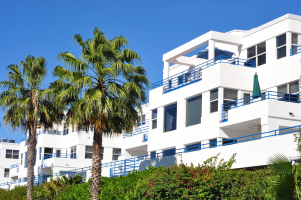A Non-Warrantable Condo Loan Program is a non-qualified mortgage (non-QM) designed to finance condominium units that do not meet the conventional lending guidelines set by Fannie Mae, Freddie Mac, FHA, or VA, making them ineligible for government-backed or conforming loans. These condos are deemed "non-warrantable" due to factors like high investor ownership, low owner-occupancy, ongoing litigation, or incomplete construction. This program is ideal for buyers or investors seeking to purchase or refinance such properties, including primary residences, second homes, or investment properties, who may not qualify for traditional financing.
What Makes a Condo Non-Warrantable?
A condo is non-warrantable if it fails to meet Fannie Mae/Freddie Mac guidelines, such as:
- Low Owner-Occupancy: Less than 50% of units are owner-occupied (e.g., high renter or investor ownership, often >55%).
- Single-Entity Ownership: One person or entity owns >10–20% of units (Fannie Mae: 20%; Freddie Mac: 25% for 5–20 unit projects).
- Incomplete Construction: The project is new or not fully completed, or the developer still controls the HOA.
- High Commercial Use: >25% of the development is used for commercial purposes.
- Litigation: The condo or HOA is involved in any lawsuit, regardless of plaintiff or defendant status (except for minor issues in some cases).
- Financial Instability: HOA has insufficient reserves (<10% of annual budget) or high delinquency rates on HOA fees.
- Unique Structures: Condotels, timeshares, fractional ownership, or properties requiring memberships (e.g., golf clubs).
- Short-Term Rentals: The project allows a majority of units to be used for short-term rentals (e.g., Airbnb).
- Master Insurance policy does not meet lender guidelines
Income Verification: Varies by lender; options include:
- Traditional (W-2s, tax returns) and Non-QM methods like bank statements, 1099s, or no income verification (no-ratio loans).
- Credit Score: Typically 620–700+
Down Payment: 10–30% (e.g., 10% with 720+ FICO, 20–25% for lower scores or riskier projects).
- Loan-to-Value (LTV): Up to 80–90%
- Reserves: 3–12 months of mortgage payments in liquid assets (e.g., cash, stocks).
- Debt-to-Income (DTI): Up to 50%, though some no-ratio programs bypass DTI.

